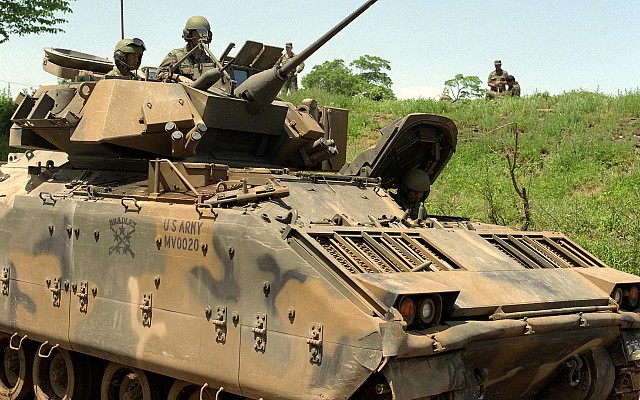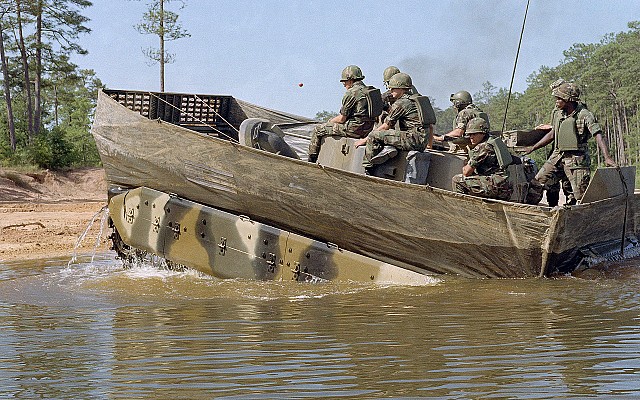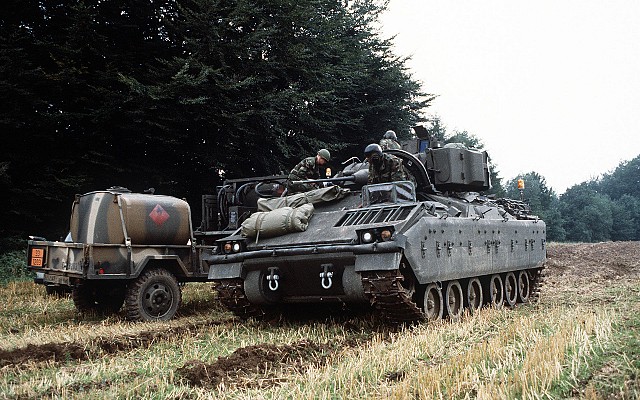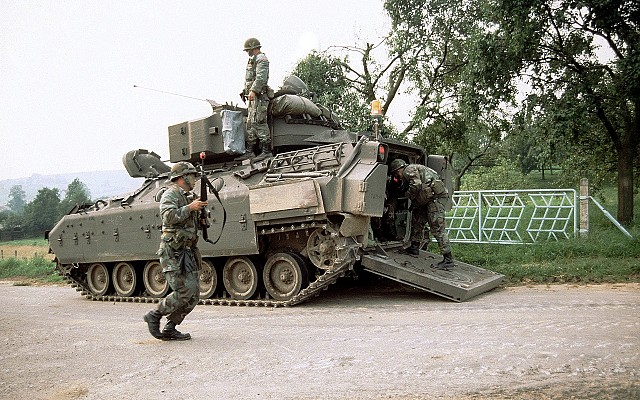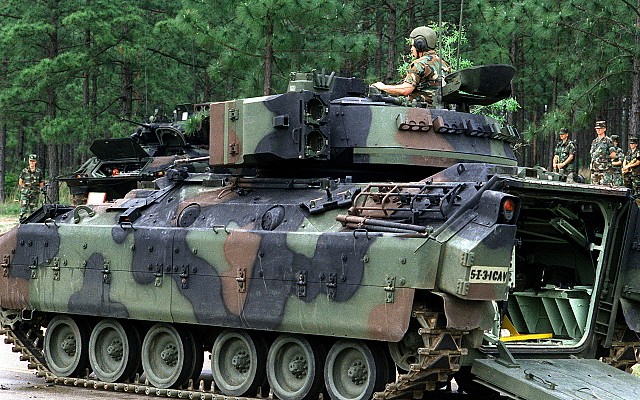M2 Bradley
First generation Bradley | M3 Bradley
Overview
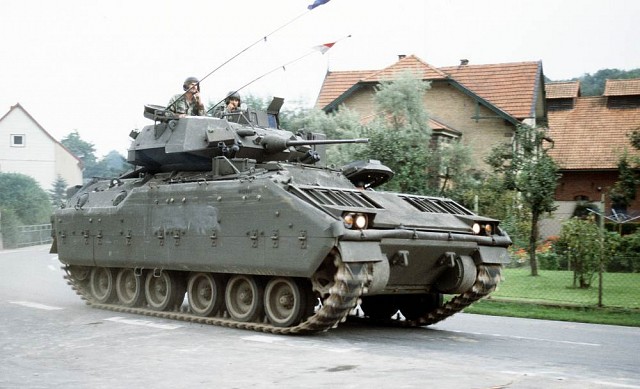
M2 Bradley
An original US Army M2 Bradley during the Reforger 85 excersize.
Source: US Army (photographer unknown) -
© public domain
1986 for M2A1
Description
Introduction
The Bradley is a late Cold War era mechanized infantry combat vehicle of US origin. It was developed in the 1970's and entered service in 1981 to fulfill a variety of roles. The M2 is the standard infantry fighting vehicle and the M3 is a cavalry fighting and reconnaissance version. Over time the Bradley has been continuously improved with better armor and systems. These updated vehicles can be found in a separate article.
Design
The design of the Bradley is a further development of the AIFV. The Bradley uses a tracked chassis with the engine and drivetrain located at the front, on the right of the driver. The two man turret is located in the middle. The troop compartment is at the rear and may be accessed by the large rear ramp which also has a door in it. Compared to the AIFV the Bradley is larger, and has a larger two men turret.
Firepower
The main armament is the 25mm Bushmaster autocannon which has 300 rounds ready to fire It fires semi-automatic or at 100 or 200 rpm. The Bushmaster can be used to engage targets out to 2.5 km. A 7.62mm M240C (FN MAG) machine gun is fitted as a coaxial weapon. The armament is fully stabilized and may be fired on the move. Tanks and fortified positions are engaged using the two round TOW missile launcher that is fitted on the left side of the turret. The TOW missiles have a range of 3.75 km and may only be fired while stationary.
Protection
The Bradley has spaced aluminum armor which protects the crew from small arms five and shell splinters all around and 20mm and heavy machine gun rounds over the frontal arc. From the A2 model (described separately) applique armor was introduced increasing the side protection, and at a later stage also frontal protection. All models feature an NBC system and 2x4 smoke grenade launchers.
Mobility
The tracked chassis provides the Bradley with a good all terrain performance. The Cummins 500 hp diesel engine was present on the M2 and M2A1 models. This was replaced from the M2A2 model onward by a turbocharged 600 hp variant. The maximum road speed for the early generation is 66 km/h and the cruising range is 480 km. With proper preparation the Bradley is amphibious. The preparation includes raising the trim vane and floatation screen all around the hull top.
Users
The main user of the Bradley is the US army with over 6.300 vehicles M2 and M3 versions acquired. Bradley's of the second generation were also exported to Saudi Arabia. During several conflict such as the 1991 and 2001 Gulf Wars the Bradley proved to be very capable. The vast majority has been upgraded to M2A2 and later standards, with a few older models in long term storage.
Variants
Variants of the early generation Bradley fighting vehicle
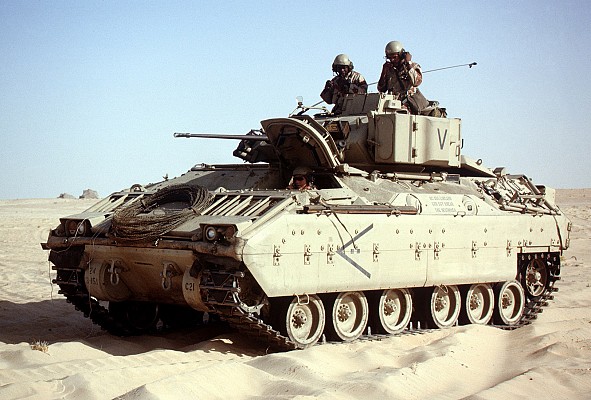
M2 Bradley
The M2 Bradley is the original and most common version of the Bradley. The M2 is used to carry and accompany a section of infantry into combat. Over time the M2 was improved to increase the level of protection, mobility and digital systems.
The first generation consists of:
M2 Bradley: Original production version with 500 hp engine.
M2A1 Bradley: M2 with the ability to fire TOW 2 missiles and improved NBC system.
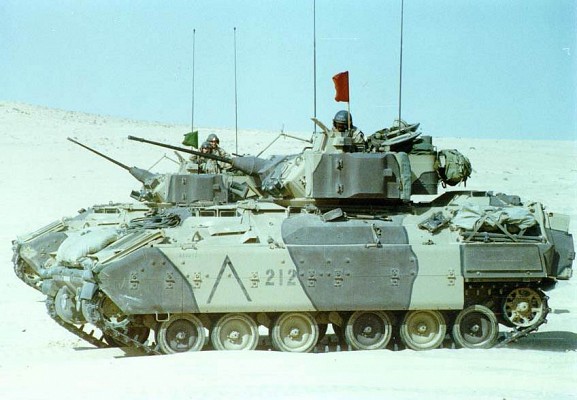
M3 Bradley
The M3 Bradley is the cavalry fighting vehicle (CFV) version of the M3 Bradley. Instead of an infantry section it transports two scouts and carries more ammunition as it is meant to support the M1 Abrams in combat. Over time the M3 has been improved in similar ways as the M2.
The early generation consists of:
M3 Bradley: Original production version with 500 hp engine.
M3A1 Bradley: M3 with the ability to fire TOW 2 missiles and improved NBC system.
Details
Armament
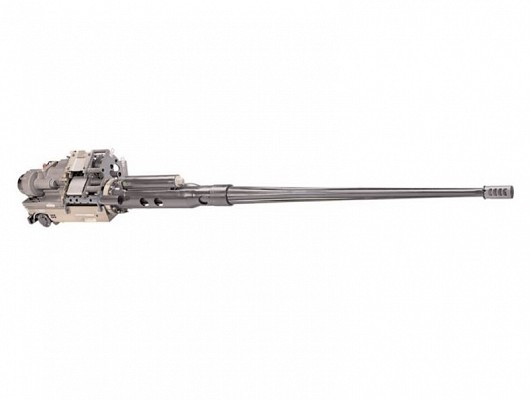
25mm Bushmaster
The 25mm M242 Bushmaster chain gun is the main armament of the Bradley.
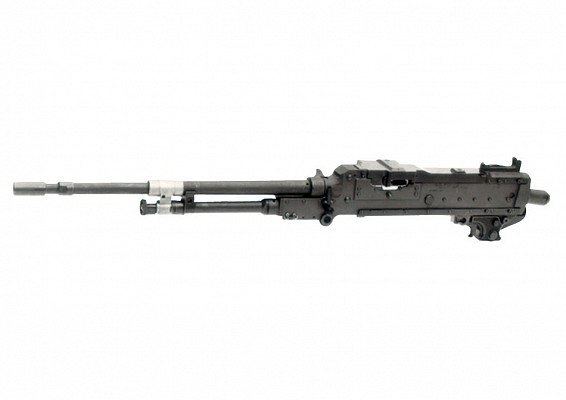
FN MAG Coaxial
The 7.62mm M240C machine gun is mounted as a coaxial machine gun.
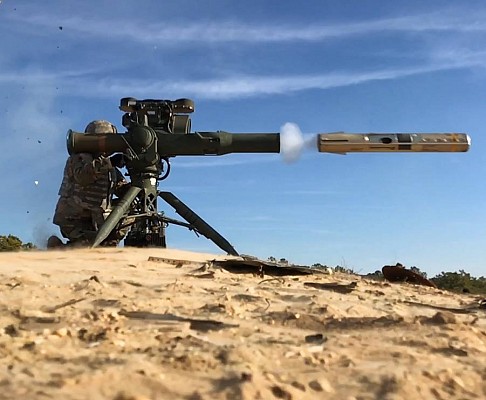
BGM-71 TOW
When stationary the two TOW missiles can be launched. The M2A1 and M3A1 added the ability to launch the TOW-2 missile.
Media
Related articles
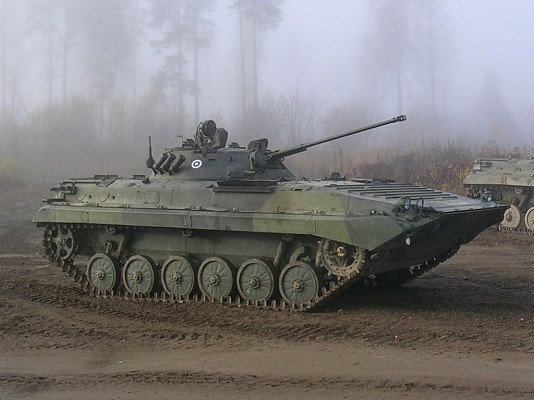
BMP-2
The Soviet BMP-2 was introduced only a year earlier than the Bradley. The BMP-2 is the Soviet counterpart to the Bradley, armed with a 30mm autocannon and a wire-guided anti-tank missile.
